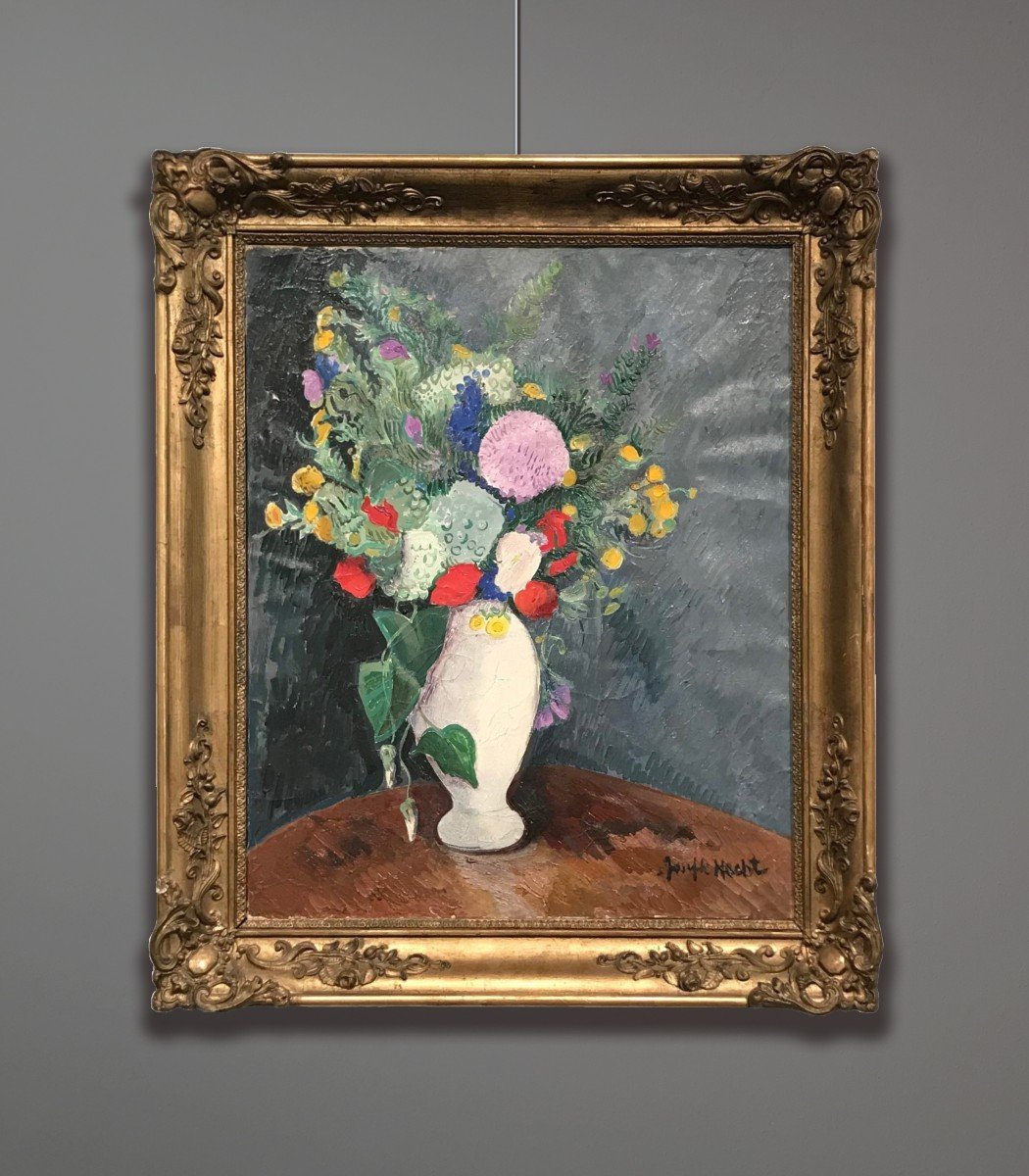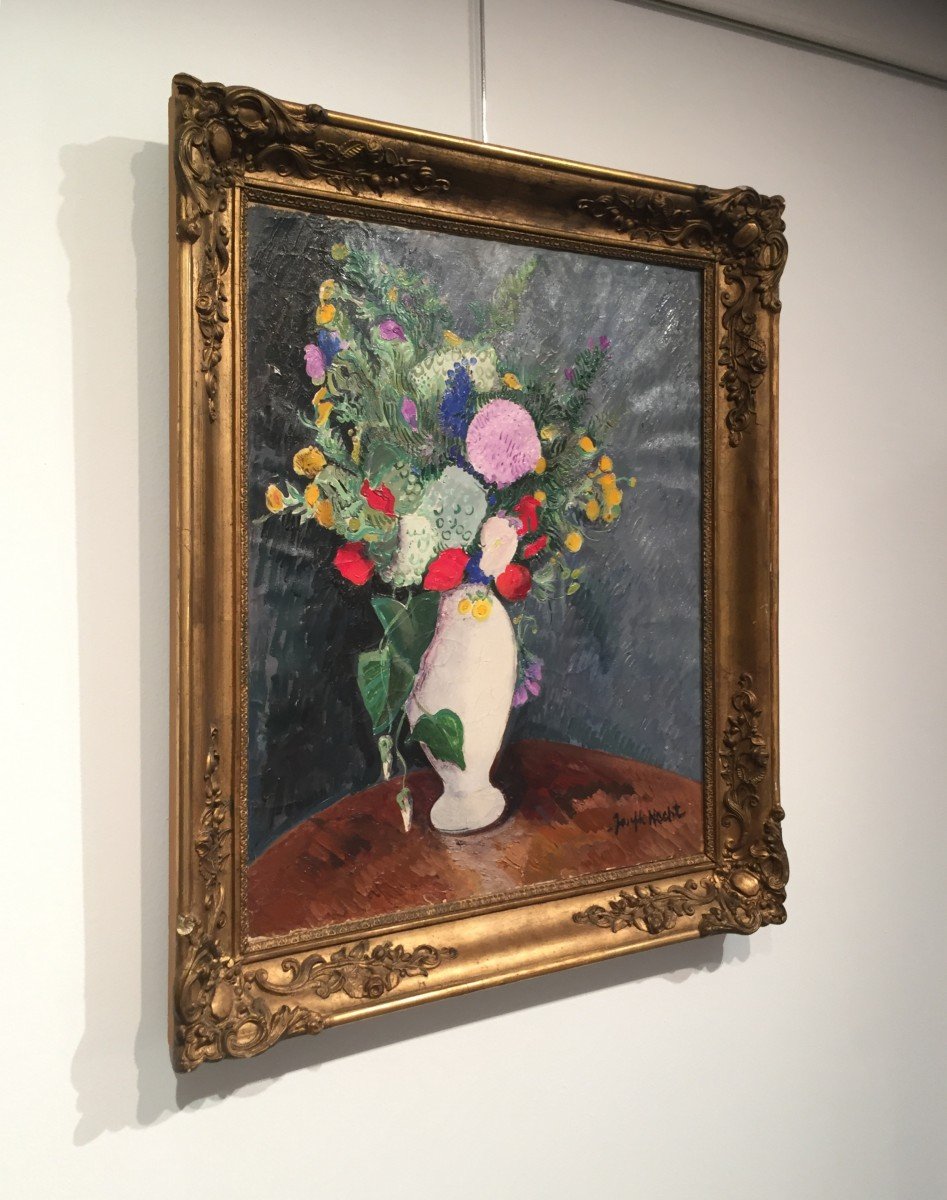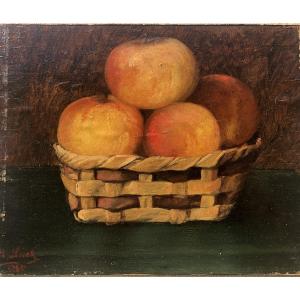With frame 73 x 62 x 7 cm
Signed lower right
Antique golden frame of the XIXth century
Exhibition:Abraham Mintchine “L’angelo perduto di Montparnasse”, Artisti russi e dell’Est a Parigi, opere dal 1925 al 1962 (Bergamo, Galleria Michelangelo, Galleria d’arte Due Bi, 03.04-09.05.2004)
Publication:Abraham Mintchine “L’angelo perduto di Montparnasse”, Artisti russi e dell’Est a Parigi, opere dal 1925 al 1962, a cura di R. Bellini, Bergamo, Galleria Michelangelo, 2004, p. 51
Joseph Hecht enrolled at the Royal Academy of Fine Arts in Krakow and studied here until 1914. In the meantime, his father gave him the opportunity to travel to Europe: in 1911 he stayed in Vienna, then Rome and Capri in 1913.
In 1919 he moved to Paris and obtained French nationality.
In Paris he likes to go to the Jardin des Plantes to observe animals, which are among the favorite subjects of his works. However, it is in the still lifes, of a meditated simplicity, and characterized by a certain “naive” imprint, that Hecht fully expresses his personality. The bright colors of the palette enliven the dark backgrounds that the artist often adopts; this contrast gives the works a particular brightness.
He befriends the sculptor Moïse Kogan (deported in 1943) who facilitates him access to an atelier in the cité Falguière where Amedeo Modigliani, Jacques Lipchitz, Léon Indenbaum and Oscar Mietstchaninoff also live. In 1920 he sent some works to the Salon d 'Automne; in 1921 at the Salon des Indépendants and the Salon des Tuilieries.
In 1930 he exhibited in London and Paris at the Galerie Berthe Weill. In 1933 he exhibited in San Francisco and published The Ten Prints of Paris. In 1938 he is in South Africa in Joannesburgh and Pretoria; he publishes two portfolios of Nouveaux croquis d'imaux and London prints. In 1939 he prints the Island of the Cormorants and participates in the Fraternity album, published by Hayter. In 1944 the Galerie Denise René in Paris exhibited his works and the Salon de Mai pays homage to his talent.
In 1948 Hecht created a printing technique that was successful in the 1950s.
On July 19, 1951, he received a commission for tapestry cartoons to be made in Sweden, but he died the same day, in his Parisian atelier. In 1992 the Museum of Drawing and Original Printing in Paris, on the occasion of the publication of the catalog raisonné, exhibited all of his four hundred engravings.
The painting is in good condition.
We remain at your disposal for further information.

























 Le Magazine de PROANTIC
Le Magazine de PROANTIC TRÉSORS Magazine
TRÉSORS Magazine Rivista Artiquariato
Rivista Artiquariato
